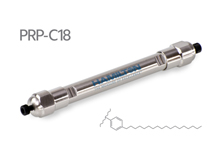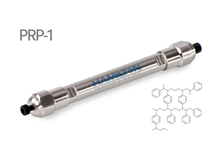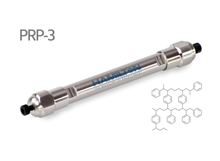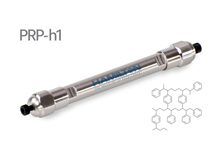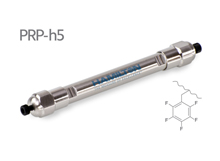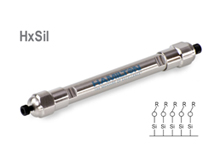Hamilton Reversed Phase Columns

Hamilton reversed-phase HPLC columns combine the best characteristics of silica-based and polymeric columns to arrive at a product that is highly inert and long-lasting. Hamilton offers four polymeric and two silica-based packing materials for reversed-phase separations.
PS-DVB resins are similar in retention characteristics to silica C18s in that retention tends to increase with lipophilicity. However, subtle differences in the chemical interaction between the analyte and stationary phase can result in differential selectivity. In many cases, analytes that co-elute on a silica C18 can be resolved on a polymeric-based support. The PRP-1 consists of a 55% cross-linked PS-DVB bead containing 100 Å pores. The properties of this base material intrinsically lend themselves to reversed-phase separations with no further surface modifications. The PRP-C18 uses the PRP-1 as the base support material with the addition of octadecyl to impart characteristics more closely related to a silica-based C18, giving slightly different selectivity than the PRP-1. To make the PRP-3, the PRP-1 is modified so that the base material contains 300 Å pores, which allows for the separation of larger molecules. The PRP-h5 utilizes the PRP-1 as its base with a pentafluorinated modification, making it more hydrophobic in nature.

